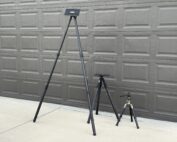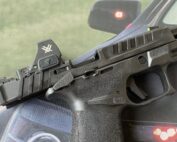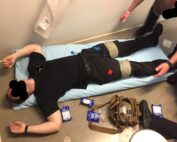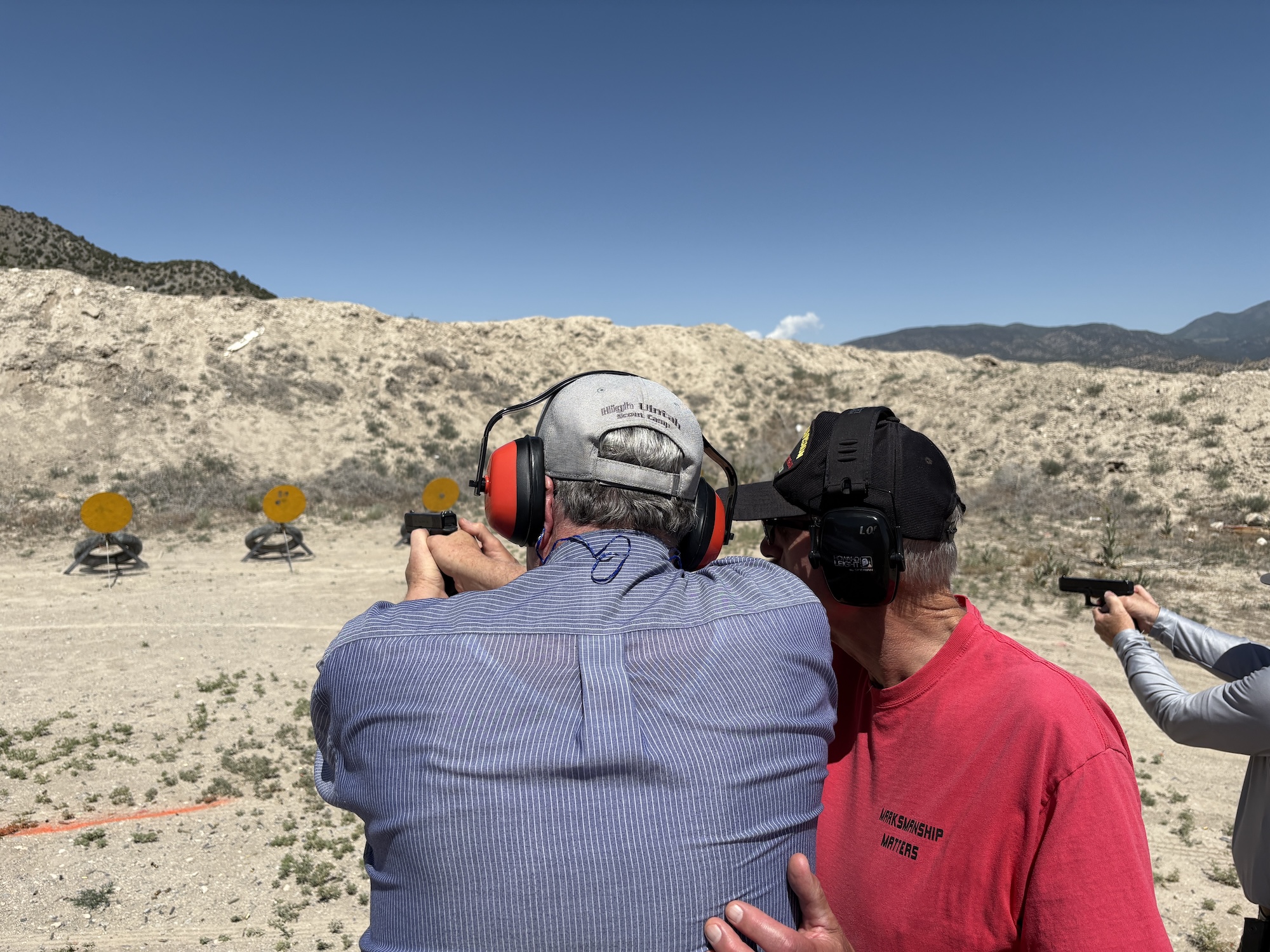
AC-111020-TQ-2-800
Is a tourniquet part of your everyday carry (EDC)? If not, it should be. The capability of being able to take a life with the moral responsibility of being able to save a life. And the life that you save may even be your own. Everyone should carry at least a tourniquet (and protective nitrile gloves).
Tourniquets have emerged as the standard of care in the tactical environment due to their ease of use, rapid application, and complete stoppage of blood loss. Current protocol considers the tourniquet an initial lifesaving intervention to control massive hemorrhage from an extremity.
The old dogma of “save a life, lose a limb” has been proven to be false. A tourniquet can remain in place for two to four hours. Thousands of combat veterans are walking around today with all their limbs because their lives were saved by tourniquet use.
Between 2005 and 2011 tourniquets saved 2,000 American lives from the wars in Iraq and Afghanistan, as reported in an article in The Economist 12 October 2017 titled “Trauma medicine has lessons learned from the battlefield.” That number has grown since then.
SECONDS COUNT
Trauma is the leading cause of death for persons under age 45. Roughly 80% of combat deaths and 50% of civilian trauma deaths are attributable to hemorrhage. It’s the most preventable cause of death in compressible injuries. The proper use of tourniquets saves lives.
According to published research, reported in the October 2017 issue of the Journal of the American Medical Association (JAMA)), the average response time in the U.S. from the time of a 911 call to arrival of EMS on scene was seven minutes. This increased to more than14 minutes in rural settings. A person can bleed out from a severed femoral artery in less than five minutes. You do the math.

Members of the Coffee County (Alabama) Sheriff’s Department apprehend the “suspect” during an active shooter exercise conducted at Lucas Stagefield. In an active shooter or terrorist event, EMS won’t render aid until the scene has been secured.
In an active shooter or terrorist incident, emergency personnel won’t reach victims until the threat has been neutralized. During the Paris attacks on 13 November 2015, it was over 160 minutes from the time the terrorists fired the first shots in the Bataclan theater until the responding emergency personnel were able to reach those inside the venue.
Seconds count. Hypovolemic shock occurs where there is an acute fluid or blood loss in the body. It is a life threatening emergency associated with high mortality. Hypovolemic shock in adults is most often secondary to rapid blood loss (hemorrhagic shock). The effects rapidly become irreversible. It causes inability of the heart to pump the essential blood needed to the body, resulting in multiple organ failure.
The reality is that you’re going to be your own first responder. Bystanders will always be first on the scene, whether it be terrorism or other criminal act or an accident. In the Boston Marathon bombing on 15 April 2013, bystanders employed improvised tourniquets to save lives. Time consuming and inefficient, but it was all that they had. Don’t plan to improvise if the need arises. Always have a real tourniquet.
TOURNIQUETS IN HISTORY
Data collected from the Boston Marathon Bombing found that six of the rubber and improvised type had to be subsequently replaced with C-A-T® tourniquets. Additionally, the most common EMS tourniquet on scene consisted of rubber tubing and a Kelly clamp.
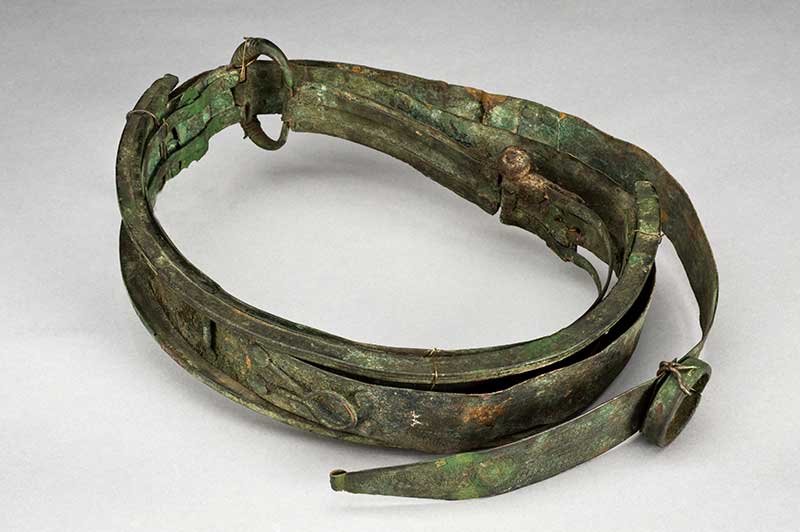
Ancient Roman thigh tourniquet circa199 BCE to 500 CE. It’s made from bronze. Originally the bronze would have been coated with leather to make the patient as comfortable as possible. Photo: Wellcome Trust Collection. Licensed under the Creative Commons Attribution 4.0 License.
The use of tourniquets on the battlefield isn’t new. Tourniquets were used as far back as Alexander the Great’s military campaigns to staunch the bleeding of wounded soldiers in the fourth century BC. The term “tourniquet” dates from the 17th century. It originated from the French word “tourner,” meaning “to turn”.
Tourniquets lost popularity after the U.S. Civil War, having been blamed for complications that resulted in amputation. This misunderstanding has unfortunately persisted, especially as it pertains to tourniquet use in civilian settings.
TOURNIQUETS IN CIVILIAN SETTINGS
Although there have been several studies in the past that have looked at tourniquet use in civilian settings, the survival benefit for patients has been unclear. However, new research shows that for civilian patients with peripheral vascular injury, prehospital tourniquet use is associated with dramatically improved odds of survival.
The study, titled “Civilian Prehospital Tourniquet Use is Associated with Improved Survival in Patients with Peripheral Vascular Injury,” was published 29 March 2018 and reported in the May 2018 issue of the Journal of the American College of Surgeons (JACS). This study was a multi-institutional retrospective review of all patients sustaining peripheral vascular injuries admitted to all 11 urban Level I trauma centers in the state of Texas from January 2011 to December 2016.
The study found that “Although still underused, civilian prehospital tourniquet application was independently associated with a 6-fold mortality reduction in patients with peripheral vascular injuries. More aggressive prehospital application of extremity tourniquets in civilian trauma patients with extremity hemorrhage and traumatic amputation is warranted.” Simply put, tourniquets save lives.

Kerry Davis, co-founder of Dark Angel Medical, discussing hemorrhagic injury management and tourniquet placement with two students in Direct Action Response Training (D.A.R.T.) course the author attended. Hemorrhage is the most preventable cause of death in compressible injuries. It accounts for approximately 80% of battlefield deaths and 50% of civilian trauma deaths.

No longer a last resort, tourniquets are now considered an initial lifesaving intervention to control massive hemorrhage from an extremity. Self-application skills are essential, as the life you save may be your own. SWAT-T Tourniquet shown.
TYPE OF TOURNIQUETS
In 1999, the US military Committee on Tactical Combat Casualty Care (CoTCCC) expanded its list of recommended tourniquets. The CoTCCC recommended list of non-pneumatic tactical tourniquets now includes the Combat Application Tourniquet (C-A-T®) SOF® Tourniquet, RevMedx® TX® Series, Ratcheting Medical Tourniquet -Tactical (RMT-T™), SAM Extremity Tourniquet (SAM-XT™), and Tactical Mechanical Tourniquet (TMT™). All of the tourniquets in the list are windlass or ratcheting tourniquets. It’s important to keep in mind that the CoTCCC is looking at tourniquets for adults in a combat setting, not in a civilian setting or involving children.
Elastic wrap tourniquets, such as the SWAT-T® (Stretch Wrap and Tuck Tourniquet) and Rapid Tourniquet® (formerly known as the R.A.T.S. Tourniquet) are also popular, especially in the civilian setting.
The SWAT-T is a medical multi-tool that may be employed as a tourniquet, pressure dressing, occlusive device, elastic bandage, sling and swathe, and more, making it a popular choice for many compact trauma kits. If the SWAT-T is employed as a pressure bandage or dressing, it is essential to check for a distal pulse after application. Although not a CoTCCC-recommended tourniquet, the SWAT-T has been the subject of several studies which demonstrated its efficacy.
The main advantage to elastic wrap tourniquets is that they pack down into a significantly smaller size, making them easier to carry. They’re also considerably less expensive than windless or ratcheting tourniquets. On the downside, elastic wrap tourniquets require a wider range of motion to apply. The latter can make self-application more difficult.
The SWAT-T and Rapid Tourniquet can be employed for higher axillary and groin applications than windless tourniquets. They may also be employed for pediatric and K-9 applications, where standard windlass and ratcheting tourniquets cannot. A study of commercial tourniquets conducted in Israel, and reported in a paper submitted to the 2018 NAEMSP Scientific Assembly, found that the SWAT-T and Rapid Tourniquet. were the best tourniquets for use on children.

SWAT-T is a medical multi-tool that may be employed as a tourniquet, pressure dressing, occlusive device, elastic bandage, sling and swathe, and more. Although not on the CoTCCC recommended it has been proven highly effective in numerous studies.
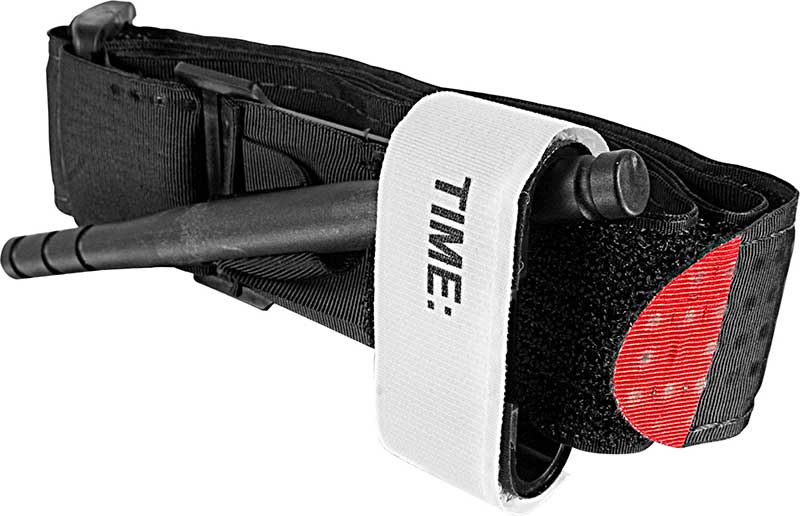
Combat Application Tourniquet (C-A-T) is a CoTCCC recommended tourniquet and is
standard issue to the US military. First responders and others are most likely to
have trained with the C-A-T.

Dark Angel Medical Tourniquet Holder is a great way to EDC a C-A-T or SOF Tourniquet. It fits belts up to 1.75 inches wide.
It should be noted that North American Rescue states that the C-A-T has been shown to be effective on limbs as small as five inches in circumference. It should also be noted that the TX Series ratcheting tourniquet is available in a pediatric model designed specifically for children.
Carry a proven tourniquet. Not all tourniquets are created equal. There are pros and cons to each tourniquet. These nuances may influence your decision. Do not rely on anecdotal stories or manufacturers claims. Try the tourniquet. Make certain that it is easy to use for both self-application and buddy application.
I recommend carrying at least two tourniquets. This will leverage your capability. I carry a CoTCCC- recommended C-A-T as my primary EDC tourniquet and a SWAT-T as my secondary/backup tourniquet.
The Dark Angel Medical Tourniquet Holder is a great low-profile way to EDC a C-A-T or SOF Tourniquet on your belt without any added bulk. It fits belt up to 1.75 inches wide. It is made in the USA from 500D nylon. Another excellent option for EDC is the PHLster Flatpack® Tourniquet Carrier from PHLster Holsters.
Buy from a reputable source. If you try to save a few bucks you may wind up with poorly made counterfeit. Counterfeit tourniquets are a growing problem. They can cost lives. The life you save may be your own or that of a loved one.
Practice with the tourniquet in situations that are similar you may encounter. Get a spare/training tourniquet for this purpose. Don’t use the actual tourniquet that you will be counting on in an emergency. Practice both strong and support side applications.
Get training. No tool will do you much good if you don’t know how to use it properly. Although getting hands-on training is important, free on-line training resources are available, including from Dark Angel Medical, Stop the Bleed®, and the Defense Health Agency’s Deployed Medicine.
DARK ANGEL MEDICAL
www.darkangelmedical.com
DEPLOYED MEDICINE
www.deployedmedicine.com
STOP THE BLEED
www.stopthebleed.org
PHLSTER HOLSTERS
www.phlsterholsters.com


 (No Ratings Yet)
(No Ratings Yet)